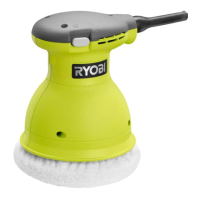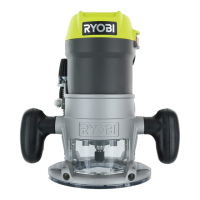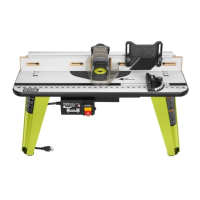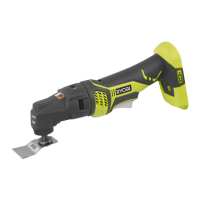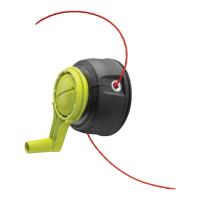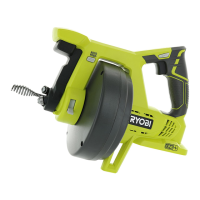4 – English
GENERAL POWER TOOL SAFETY WARNINGS
BUFFER / POLISHER SAFETY WARNINGS
Keep cutting tools sharp and clean. Properly main-
tained cutting tools with sharp cutting edges are less
likely to bind and are easier to control.
Use the power tool, accessories and tool bits etc.
in accordance with these instructions, taking into
account the working conditions and the work to be
performed. Use of the power tool for operations different
from those intended could result in a hazardous situation.
SERVICE
Have your power tool serviced by a qualified repair
person using only identical replacement parts. This will
ensure that the safety of the power tool is maintained.
When servicing a power tool, use only identical
replacement parts. Follow instructions in the Main-
tenance section of this manual. Use of unauthorized
parts or failure to follow Maintenance instructions may
create a risk of shock or injury.
Hold power tool by insulated gripping surfaces, when
performing an operation where the cutting accessory
may contact hidden wiring. Cutting accessory contact-
ing a “live” wire may make exposed metal parts of the
power tool “live” and could give the operator an electric
shock.
Keep hands away from work surface. Following this
rule will reduce the risk of serious personal injury.
Do not use this buffer/polisher as a component of
other products. Following this rule will reduce the risk
of serious personal injury.
Inspect for rough surfaces, protrusions, and snags on
work surface before using the buffer/polisher. Follow-
ing this rule will reduce the risk of serious personal injury.
Know your power tool. Read operator’s manual care-
fully. Learn its applications and limitations, as well
as the specific potential hazards related to this tool.
Following this rule will reduce the risk of electric shock,
fire, or serious injury.
Always wear eye protection with side shields marked
to comply with ANSI Z87.1. Following this rule will reduce
the risk of serious personal injury.
Protect your lungs. Wear a face or dust mask if the
operation is dusty. Following this rule will reduce the risk
of serious personal injury.
Protect your hearing. Wear hearing protection during
extended periods of operation. Following this rule will
reduce the risk of serious personal injury.
Inspect tool cords periodically and, if damaged, have
repaired at your nearest authorized service center.
Constantly stay aware of cord location. Following this
rule will reduce the risk of electric shock or fire.
Check damaged parts. Before further use of the
tool, a guard or other part that is damaged should
be carefully checked to determine that it will operate
properly and perform its intended function. Check for
alignment of moving parts, binding of moving parts,
breakage of parts, mounting, and any other conditions
that may affect its operation. A guard or other part that
is damaged should be properly repaired or replaced
by an authorized service center. Following this rule will
reduce the risk of shock, fire, or serious injury.
Make sure your extension cord is in good condi-
tion. When using an extension cord, be sure to use
one heavy enough to carry the current your product
will draw. A wire gauge size (A.W.G.) of at least 16 is
recommended for an extension cord 50 feet or less
in length. A cord exceeding 100 feet is not recom-
mended. If in doubt, use the next heavier gauge. The
smaller the gauge number, the heavier the cord. An
undersized cord will cause a drop in line voltage resulting
in loss of power and overheating.
Inspect for and remove all nails from lumber before
using this tool. Following this rule will reduce the risk of
serious personal injury.
If the power supply cord is damaged, it must be
replaced only by the manufacturer or by an authorized
service center to avoid risk.
Save these instructions. Refer to them frequently and
use them to instruct others who may use this product. If
you loan someone this product, loan them these instruc-
tions also.
